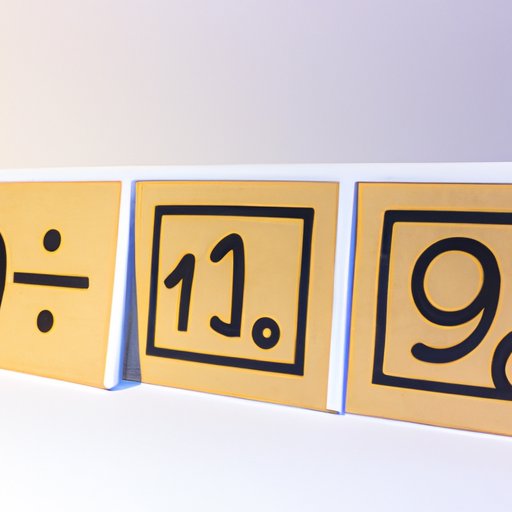
Introduction
Fractions are an important part of mathematics, used in everyday life to express values that are not whole numbers. Understanding how to multiply fractions with whole numbers is a crucial skill that can be applied in a wide range of situations, from cooking to carpentry. In this article, we will cover the basic concept of multiplying fractions with whole numbers and provide step-by-step instructions, common mistakes to avoid, and real-world applications of the skill. We will also provide a hands-on approach with interactive activities and frequently asked questions.
Step-by-Step Guide
To multiply fractions with whole numbers, you must first convert the whole number into a fraction. This can be done by placing the whole number over one. Then, multiply the fractions as you would normally do by multiplying the numerators and the denominators. Finally, simplify the fraction if possible. For example, if we want to multiply 1/3 by 4, we first convert 4 into a fraction: 4/1. Then, we multiply the two fractions together: 1/3 x 4/1 = 4/3. Finally, we simplify the fraction: 4/3 = 1 1/3.
It is important to simplify the fraction whenever possible to get the answer in its lowest terms. In this example, we simplified the fraction by turning it into a mixed number. You can check your answer by converting the mixed number back into an improper fraction: 1 1/3 = (1 x 3 + 1) / 3 = 4/3.
Common Mistakes to Avoid
One common mistake when multiplying fractions with whole numbers is forgetting to convert the whole number into a fraction before multiplying. Another mistake is not simplifying the fraction at the end. To avoid these mistakes, always remember to convert the whole number into a fraction by placing it over one and simplify the final fraction if possible. Practicing with simpler problems can help build your confidence before moving on to more complex ones.
Visual Representations
Diagrams and other visual aids can help you understand the concept of multiplying fractions with whole numbers. Interactive tools such as online calculators can be particularly helpful for practicing the skill. It is also important to understand the relationship between fractions and decimals, as you can easily switch between the two forms to get the answer in the most appropriate format.
Real-World Applications
Multiplying fractions with whole numbers is essential in many areas of life, from cooking to carpentry. In cooking, for example, recipes often call for fractions of ingredients, such as 1/2 cup of flour or 3/4 teaspoon of baking soda. Carpenters use fractions when measuring wood, such as cutting a board into halves or thirds. Understanding fractions is an important skill that can be applied in many real-world scenarios.
Hands-On Approach
Practicing multiplying fractions with whole numbers can help you master the skill. Activities and exercises such as worksheets, quizzes, and other interactive materials can be a fun and effective way to practice. When you get stuck, seek help or collaborate with others to learn from their approach. Online forums or study groups can provide a supportive environment for learning.
Frequently Asked Questions
Q: What is the easiest way to multiply fractions with whole numbers?
A: Convert the whole number into a fraction by placing it over one, then multiply the fractions as you normally would. Finally, simplify the fraction if possible.
Q: Should I simplify the fraction at the end?
A: Yes, simplifying the fraction is important to ensure that the answer is in its lowest terms.
Q: How can I practice multiplying fractions with whole numbers?
A: Worksheets, quizzes, and other interactive materials are great ways to practice. Seek help or collaborate with others if you get stuck.
Conclusion
Multiplying fractions with whole numbers is a vital skill that can be applied in various aspects of life. By following the step-by-step guide, avoiding common mistakes, using visual representations, exploring real-world applications, and taking a hands-on approach, you can become proficient in multiplying fractions with whole numbers. Keep practicing and seeking help to become more confident and comfortable with the skill.




